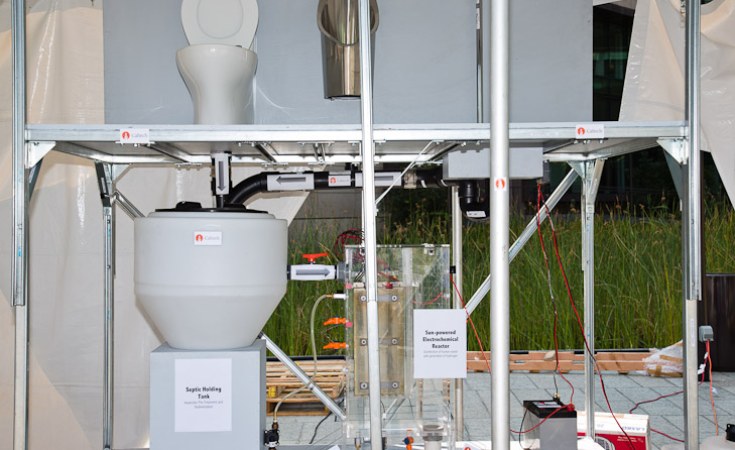Durban — Recycling is increasingly popular in today's ecologically aware world, but in the field of sanitation the "yuk factor" tends to get in the way. Most people recoil from the notion of re-using human waste products, yet this is an approach supported by leaders in the field of water and sanitation, such as those in Durban, South Africa, who are pioneering the re-use of human waste product.
"We have similar problems to other developing countries throughout the world and handling sludge from pit toilets is one of our biggest issues," said Teddy Gounden, manager for education and capacity development of the municipality's water and sanitation department.
Gounden and another major role-player in the sanitation field, Chris Buckley, are looking forward to attending the 3rd African Conference on Sanitation and Hygiene to be held later this month in Kigali, Rwanda, and sharing their experiences with other African sanitation experts about what is likely to be a hot topic.
The conventional way of dealing with the contents of a full pit latrine has been to put the sludge through treatment works, old school technology which can cause overloading. Durban's eThekwini Municipality (named for the Zulu word for harbor) is using an innovative new process that aims to maximize the re-use potential of solid waste. In partnership with the Pollution Research Group at the chemical engineering department of the University of KwaZulu Natal (UKZN), the municipality has developed a Faecal Sludge Sanitation Machine.
"It is unique, there's no other device like it in the world," said Buckley, head of the Pollution Research Group. The machine separates out the organic manner from the pit sludge. (Don't ask about the so-called tramp components that end up down there; alien objects are said to range from bricks and glass to plastic and cans, even pigs' heads.)
Gounden says that the city's recent work in emptying some 30,000 pit latrines has resulted in the development of "some pretty nifty new tools" to improve the process. With pits as deep as two metres, there are considerable health and safety challenges.
Once the sludge is removed, it is pushed through a sanitisation machine that heats it to temperatures as high as 500 degrees Celsuis, killing all pathogens. The sanitized outcome of this pasteurization process is packed into 20-kilogram bags, which can be safely used as fertiliser for crops. There is no concern for the impact on ground water, according to tests carried out by the UKZN researchers.
Another crucial achievement of this machine is the removal of the yuk factor. "The end products are not dissimilar to the dry pellets you'd feed your dog or cat," Buckley says matter-of-factly. "They don't smell, can be safely handled and don't bear any resemblance to where they came from."
In this port city, Africa's largest, shipping containers for sea transport of goods get re-used in all kinds of ways, housing everything from offices to phone shops. So it's no surprise that the pelletising unit is housed in two ISO shipping containers, which can easily be moved from one location to another. Thus the pellets can be made on site, with sludge from the pit latrines brought to the machines for processing. Once the process is completed, the municipality only has to return in three to four years time.
What excites Gounden, who coordinates community outreach for the city's sanitation efforts, is the potential to kick-start much needed job creation.
"Once people start seeing the beneficial use of this pelletising machine, the incentive is there," Gounden enthused. "We can pay community residents for removing the product, in effect buying the sludge from them."
Gounden is optimistic that this arrangement can change people's behavior so they stop putting inorganic matter into toilets, which could obviate or at least shorten the process of separating the waste.
"From a municipal perspective, we need to fine tune a business model so we can get sanitation entrepreneurs involved in the emptying of the pits and the processing, and then deriving income from the fertiliser produced, as there's a ready market for it," said Gounden. "This is what we're brainstorming now."
The machine is still in the pilot phase, with more modifications anticipated from ongoing trials to improve its energy efficiency. A new model could be smaller so as to make for easier transportation. Then the city and a South African manufacturer aim to take the project to scale, with the aim of patenting the technology and making it available to other municipalities and countries throughout Africa.


